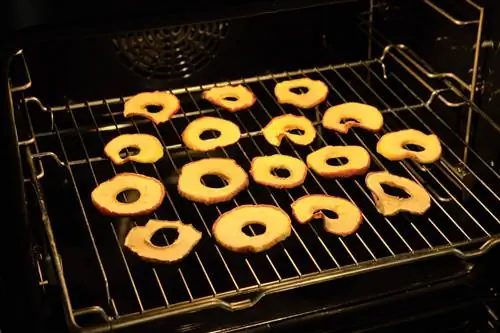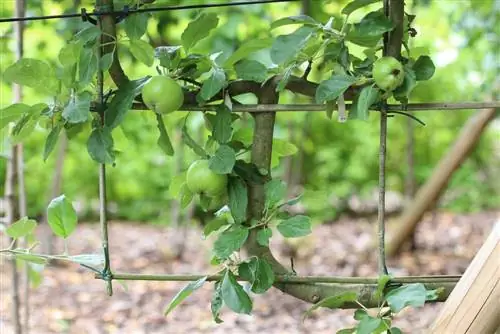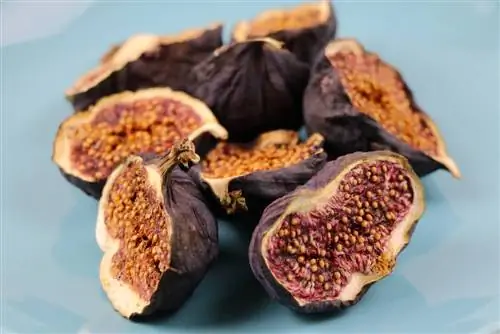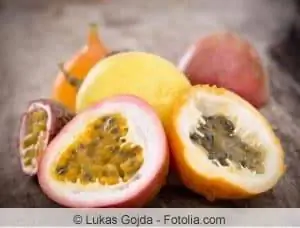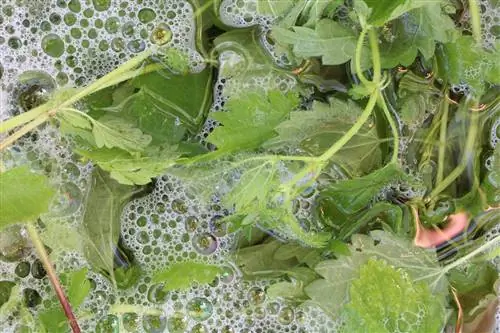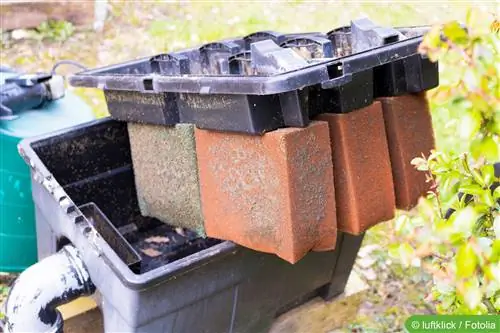- Author admin [email protected].
- Public 2023-12-17 03:39.
- Last modified 2025-06-01 06:48.
The drying of fruit, fruits and vegetables is also known as drying and has been known in this form for many centuries. It is one of the oldest methods of preserving food, which can be preserved for a longer period of time.
It undoubtedly comes from the time when refrigerators were still a foreign concept or when alternatives had to be found due to a lack of electrical energy.
The History of Dried Fruit
Dried fruit only has a residual moisture content of around 20% and can therefore be stored for a long time without spoiling. However, not every fruit is suitable for being dried or dehydrated. In the Middle East - the region where dried fruit originated - grapes, dates and figs were originally dried. However, the people in this region did not know any drying equipment; the fruits that fell ripe from the tree lay in the hot sun and dried there in a completely natural way. From here, dried fruits made their way to Europe and became known further north via Greece and Italy. Later, plums, apricots and peaches from Asia also took the same route.
What distinguishes dried fruit?
Dried fruit has a significantly lower moisture content than fresh garden fruit. However, at the same time as the drying process, the sugar content increased, a significant contribution to the longer shelf life. This process also ensures that the fruit's own aromas are much more clearly present, meaning that dried fruit tastes much more intense than fresh fruit. A small negative point about dried fruit is its appearance. It loses its fresh color and of course the plump cover. Industrially produced dried fruit and dried vegetables are therefore treated with sulfur and other preservatives. Since this can cause he alth problems for more and more people or they prefer to enjoy natural products, self-drying is once again in the foreground.
Tip:
Properly stored, dried fruit will last for a year unrefrigerated.
Which fruits can be dried?
According to the botanical explanation, fruits include not only the varieties commonly known as fruits, but also some fruits known as “vegetables”. Overall, these are the typical varieties that are dried:
- Apples, pears and plums
- Grapes
- Strawberries
- Kiwis
- Cherries
- Peaches and apricots
- Red Berries
- Dates and figs
- Bananas
- Papayas, mango, pineapple
- Coconut
- Eggplant
- Pulses
- Peppers
- Olives
- Tomatoes
- Mushrooms
- Herbs
Drying fruit is becoming more popular again, partly due to consumers' increasing he alth awareness. Dried fruit is added to muesli, made as a snack between meals and used in the home bakery. Many people who got a taste for dried apple rings or banana chips now also dry vegetables, fish and meat.
Drying in the dehydrator or in the oven?
In the past there was no question of what the fruit was dried in, there were no electric dehydrators like those available today. A modern oven makes the drying process significantly cheaper because it takes many hours for the pickled food to dry. Our grandmothers didn't have this problem; they ran a coal stove in the kitchen, which also had an oven slot. An alternative back then was air drying. If you don't want to dry your apple rings threaded across the apartment on a string and don't have any other suitable space available, you'll come back to the oven.
Preparation for drying in the oven
The oven is very suitable for getting started with the topic of drying fruit and vegetables. You have it in the kitchen anyway, so there is no need to purchase an additional dehydrator (for now). Maybe that's a goal if you like it or have found a taste for it.
For the drying process, the fruit or vegetables - i.e. the food to be dried - must be prepared accordingly. Of course, only ripe varieties are used that do not have any rotten spots or other injuries. The peel is removed from kiwis, apples and pears. The cores are also removed and then the fruit is cut into thin slices. The thinner the fruit is sliced, the quicker it will dry. Strawberries are halved depending on their size, grapes can be left whole.
Tip:
Spray with lemon water (5 ml lemon juice to 500 ml water).
Plums, like apricots, peaches or other pome fruits, are halved and the stone removed. These fruits are placed on the rack with the cut side facing up. The oven racks are then covered with a cloth and the fruits or vegetables to be dried are placed carefully and not too close together. Of course, you can insert a wire rack into each shelf of the oven, so you can use the entire space and save time and money. However, it should be taken into account that not all types of fruit require the same amount of time to be dried.
Tip:
With circulating air, the drying process is faster than with top and bottom heat.
How long does fruit take to dry?
The electric oven is preheated to approx. 40 °C. Once the racks with the fruit to be dried have been inserted, the oven door is not closed tightly, but should be left slightly open. It can be held in this position using a pot holder or kitchen towel between the door and the oven. It takes a few hours for the drying process to finish. The exact duration is very individual and depends on both the oven and the pickled fruit. It is ideal if only one variety is dried at the same time in order to avoid dry periods of different lengths.
- Apples and other pome fruits are dried at 60 °C to 70 °C
- for mushrooms, 50 °C is sufficient
After drying, the dried pieces need to cool down and air dry for a few days before being placed in tightly sealable jars. To get one kilogram of dried apples, you need 10 kg of fresh apples!
More tips for drying
- Hot air ovens are practical because you can dry several occupied trays or racks in them at the same time.
- When grilling, it is best to place the fruit on baking paper. The air can circulate well.
- For baking trays, place several layers of kitchen paper underneath to absorb the moisture.
- The temperature in the oven should not be less than 20°C. Otherwise not enough water will be extracted from the fruit. They then quickly become moldy.
- At temperatures above 60 °C, the first cells in the fruit burst and the fruit juice runs out.
- How long you dry depends on the type of fruit, the degree of ripeness and the time of harvest.
- The process takes many hours and can extend up to two days. The fruit should be turned every now and then as the supporting surfaces remain moist for longer.
- It is important that the moist air can escape. This happens automatically in hot and convection ovens.
- With other ovens, the door must be left ajar. It's best to wedge a wooden spoon between them.
To know when the fruit is good, do the finger test. The fruit should feel soft and elastic once cooled. It should not be damp or soggy. It's best to break through a piece of fruit so you can see whether it's still moist inside. Final tip: Store dried fruit in airtight packaging, dark and, above all, dry.

